For me personally, it's been fun to look back at my own experiences with Eric and talk to Swedish friends who've worked with him closely. Looking back at these interviews, the following are significant aspects of his work and success:
- curiosity - about music of all kinds and periods, for new music, for better ways of achieving excellence - this is something we can all emulate - it's a huge reason for his success - he did an enormous amount of new music and constantly encouraged composers to write for the medium of a cappella choir
- his concern for getting it right (and being willing to work--and work the choir!--until he did)
- his superb piano skills and his way of communicating through the keyboard to his ensembles - this is not something all of us can do, but for those who have great skill as a pianist, his use of the keyboard can provide a model for a way to work . . . and all of us can learn to play and give pitches in a way that supports beautiful choral sound, rather than call forth harsh and un-vocal ones
- his conducting technique - while one may not want or be able to copy Eric's exact technique, his concern with mastering technical elements of conducting and (more importantly) making sure the body reflects what a singer needs to sing well should concern all of us -- as Stefan Parkman said, "He wanted to wave his arms and hands in such a way that it allows the singers to produce the sound."
- the choral sound he developed came out of working for clarity, balance, and beautiful intonation - that he did this with big, well-trained voices helped define a new standard
- his joy and love for music - as Arne Lundmark said, "In the concert itself I often had the feeling that all his love to music suddenly was shown and we were willing to give him all he asked for."
I - Introduction
II - Interview with Eva Wedin
III - Interview with Robert Sund
IV - Eric teaching conducting technique I (notes from a workshop I observed)
V - Eric teaching conducting technique II (continued)
VI - Watching Eric conduct
VII - Interview with Arne Lundmark
VIII - Interview with Stefan Parkman

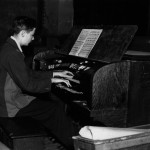 At
age five, Peter’s parents enrolled him in piano lessons, and sent him,
along with his siblings, to Sunday School and worship at Saint James
Episcopal Church in Kent, Wash. At the age of 9, Peter had his first
encounter with the numinous at Saint James; five years later, Hallock
was playing the organ there. His organ teacher at the time was Clayton
Johnson of Tacoma, Wash. Peter’s sisters Tillie and Barbara would often
trek to Saint James to hear Peter play miniature organ recitals on
Sunday afternoons; whatever Hallock was doing, his sisters were always
there. He was active and creative from an early age, not just in music,
but also arts and crafts, weaving, letter writing, puppet theater, and
soap box derby car racing.
At
age five, Peter’s parents enrolled him in piano lessons, and sent him,
along with his siblings, to Sunday School and worship at Saint James
Episcopal Church in Kent, Wash. At the age of 9, Peter had his first
encounter with the numinous at Saint James; five years later, Hallock
was playing the organ there. His organ teacher at the time was Clayton
Johnson of Tacoma, Wash. Peter’s sisters Tillie and Barbara would often
trek to Saint James to hear Peter play miniature organ recitals on
Sunday afternoons; whatever Hallock was doing, his sisters were always
there. He was active and creative from an early age, not just in music,
but also arts and crafts, weaving, letter writing, puppet theater, and
soap box derby car racing.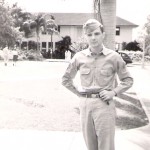 After
high school, Peter enrolled at the University of Washington (UW), but
was drafted into the U.S. Army after only one year of study. From June
1943–February 1946, he served as a chaplain’s assistant and sharpshooter
in the Pacific theater during World War II. After the war, he
re-enrolled at the UW and resumed organ performance studies with Walter
Eichinger, composition with George McKay, and took music courses with
Miriam Terry and Eva Heinitz, all of whom maintained a lifelong
collegial relationship with Peter. Though Hallock had completed all
required coursework by 1949, eighteen months of government-paid
education remained, so Peter enrolled at the College of Saint Nicolas of
the Royal School of Church Music (RSCM), then based in Canterbury,
England. He became the first American Choral Scholar at Canterbury
Cathedral, singing under the direction of Gerald Knight. In June 1951,
he completed both the RSCM program and was graduated from the UW with a
Bachelor of Arts in Music degree. Later, in 1958, he took the Master of
Arts in Music degree from the UW.
After
high school, Peter enrolled at the University of Washington (UW), but
was drafted into the U.S. Army after only one year of study. From June
1943–February 1946, he served as a chaplain’s assistant and sharpshooter
in the Pacific theater during World War II. After the war, he
re-enrolled at the UW and resumed organ performance studies with Walter
Eichinger, composition with George McKay, and took music courses with
Miriam Terry and Eva Heinitz, all of whom maintained a lifelong
collegial relationship with Peter. Though Hallock had completed all
required coursework by 1949, eighteen months of government-paid
education remained, so Peter enrolled at the College of Saint Nicolas of
the Royal School of Church Music (RSCM), then based in Canterbury,
England. He became the first American Choral Scholar at Canterbury
Cathedral, singing under the direction of Gerald Knight. In June 1951,
he completed both the RSCM program and was graduated from the UW with a
Bachelor of Arts in Music degree. Later, in 1958, he took the Master of
Arts in Music degree from the UW.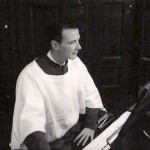 Peter
began work as organist/choirmaster at Saint Mark’s Cathedral on October
28, 1951, a position he held until his involuntary retirement in 1991.
He was named Canon Precentor, the first layperson in the Episcopal
Church to hold such a title; he received two Bishop’s Crosses from
two Bishops of Olympia, was named an Associate of the Royal School of
Church Music, and was granted a Doctor of Church Music degree honoris causa by
Church Divinity School of the Pacific. In 1992, at the invitation of
the Rev. Ralph Carskadden, Peter became organist at Saint Clement of
Rome Episcopal Church, Seattle, a position he held until March 2013.
Peter
began work as organist/choirmaster at Saint Mark’s Cathedral on October
28, 1951, a position he held until his involuntary retirement in 1991.
He was named Canon Precentor, the first layperson in the Episcopal
Church to hold such a title; he received two Bishop’s Crosses from
two Bishops of Olympia, was named an Associate of the Royal School of
Church Music, and was granted a Doctor of Church Music degree honoris causa by
Church Divinity School of the Pacific. In 1992, at the invitation of
the Rev. Ralph Carskadden, Peter became organist at Saint Clement of
Rome Episcopal Church, Seattle, a position he held until March 2013.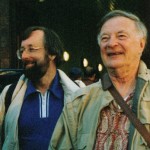 The Ionian Psalter,
Peter’s largest creative work, was born out of a desire for greater
congregational participation in Psalm singing. Hallock began composing
the Psalm settings on October 4, 1981 and continued through the entire
three-year cycle of lectionary readings. Later, he expanded the Psalter
and created a customized version for use by Lutheran congregations and
those following the Revised Common Lectionary. The Psalter’s name is
derived from
The Ionian Psalter,
Peter’s largest creative work, was born out of a desire for greater
congregational participation in Psalm singing. Hallock began composing
the Psalm settings on October 4, 1981 and continued through the entire
three-year cycle of lectionary readings. Later, he expanded the Psalter
and created a customized version for use by Lutheran congregations and
those following the Revised Common Lectionary. The Psalter’s name is
derived from 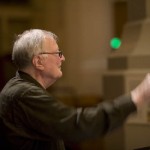 At
Peter’s invitation, twelve men from the university and community began
study of chant in 1955. This study group solidified into a choir that
sang the Office of Compline on Sundays at 9:30 p.m. beginning in late
1956. Classical 98.1 KING-FM began broadcasting the service in 1962.
Hallock once wrote of Compline: “The Compline service may find its best
definition not in terms of what it is, but what it does, for the needs
it fulfills for those who attend in person, the large radio audience,
and members of the choir. For all of these it is part of a journey
towards God. Such a journey must allow for definitions as varied as its
sojourners with the promise of a goal as ‘wide as sky and sea.’” Peter
directed the Compline Choir until his retirement in June 2009.
At
Peter’s invitation, twelve men from the university and community began
study of chant in 1955. This study group solidified into a choir that
sang the Office of Compline on Sundays at 9:30 p.m. beginning in late
1956. Classical 98.1 KING-FM began broadcasting the service in 1962.
Hallock once wrote of Compline: “The Compline service may find its best
definition not in terms of what it is, but what it does, for the needs
it fulfills for those who attend in person, the large radio audience,
and members of the choir. For all of these it is part of a journey
towards God. Such a journey must allow for definitions as varied as its
sojourners with the promise of a goal as ‘wide as sky and sea.’” Peter
directed the Compline Choir until his retirement in June 2009.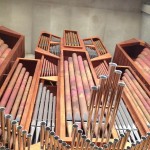 As
an organist, Peter’s lasting legacy at the cathedral is the
mechanical-action organ built by the Dutch firm D. A. Flentrop.
Installation of the organ began in late 1964 and tonal finishing took
place in July 1965. For the dedication, Peter composed Hail Universal Lord.
Hallock believed installation of the Flentrop to be one of his greatest
accomplishments: “I suppose the Flentrop might be my greatest
accomplishment, provided we don’t blow ourselves off the earth, it’ll
probably be there for a century or two.”
As
an organist, Peter’s lasting legacy at the cathedral is the
mechanical-action organ built by the Dutch firm D. A. Flentrop.
Installation of the organ began in late 1964 and tonal finishing took
place in July 1965. For the dedication, Peter composed Hail Universal Lord.
Hallock believed installation of the Flentrop to be one of his greatest
accomplishments: “I suppose the Flentrop might be my greatest
accomplishment, provided we don’t blow ourselves off the earth, it’ll
probably be there for a century or two.”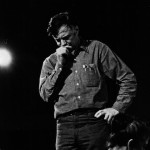 As
a liturgist, Peter contributed something new to the Advent and Good
Friday Processions held at the cathedral. He composed music for two
choirs in dialogue (Cathedral and Compline Choirs), liturgical handbells
from the firm Petit and Fritsen based in Aarle-Rixtel, Holland, and
organ. Hallock’s ultimate metamorphosis of the Advent Procession was in
crafting the liturgy around the seven ‘Great O Antiphons’ and
the setting each of the antiphons to music, using all the pomp and drama
he could muster. As a dramatist, Peter produced liturgical dramas at
the Summer School of Church Music held at Saint Mark’s in 1965. Hallock
was assisted by Ronald Arnatt (music director), Aurora Valentinetti
(dramatic director), and Glenn White (sound engineer). This production
team, minus Arnatt, collaborated on future productions in 1968, 1969,
and 1975 for Hallock’s Everyman and 1970, 1971, and 1974 for his Days of Herod.
As
a liturgist, Peter contributed something new to the Advent and Good
Friday Processions held at the cathedral. He composed music for two
choirs in dialogue (Cathedral and Compline Choirs), liturgical handbells
from the firm Petit and Fritsen based in Aarle-Rixtel, Holland, and
organ. Hallock’s ultimate metamorphosis of the Advent Procession was in
crafting the liturgy around the seven ‘Great O Antiphons’ and
the setting each of the antiphons to music, using all the pomp and drama
he could muster. As a dramatist, Peter produced liturgical dramas at
the Summer School of Church Music held at Saint Mark’s in 1965. Hallock
was assisted by Ronald Arnatt (music director), Aurora Valentinetti
(dramatic director), and Glenn White (sound engineer). This production
team, minus Arnatt, collaborated on future productions in 1968, 1969,
and 1975 for Hallock’s Everyman and 1970, 1971, and 1974 for his Days of Herod. Hallock
worked extensively within The Episcopal Church, having been appointed
to the Joint Commission on Church Music in 1965; he also directed the
choir for the 1967 General Convention of the Episcopal Church. His work
with the Joint Commission on Church Music centered primarily on
production of the 1973 Songs for Liturgy and More Hymns and Spiritual Songs. Embedded within Songs for Liturgy was
the introduction of new, intriguing sounds, like handbells, percussion,
and clapping and antiphonal congregational texts, into the worship
space.
Hallock
worked extensively within The Episcopal Church, having been appointed
to the Joint Commission on Church Music in 1965; he also directed the
choir for the 1967 General Convention of the Episcopal Church. His work
with the Joint Commission on Church Music centered primarily on
production of the 1973 Songs for Liturgy and More Hymns and Spiritual Songs. Embedded within Songs for Liturgy was
the introduction of new, intriguing sounds, like handbells, percussion,
and clapping and antiphonal congregational texts, into the worship
space.
